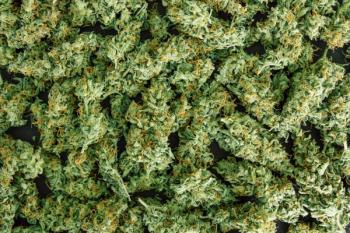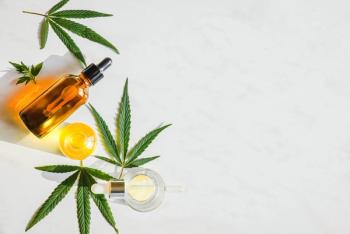
Recent Study Finds THC Labeling More Accurate in Concentrate Products Than Cannabis Flower
Data from a recent study discovered that THC labeling was more accurate in concentrate products than with cannabis flower.
According to a recent study (1,2) titled,
The study was orchestrated by the University of Colorado (Boulder, Colorado) and MedPharm Holdings LLC, who operates as Bud & Mary’s (1). To gather data, researchers tested 182 flower products and 99 concentrate products. Out of the concentrate products, 27 were unique concentrate forms. The products were gathered from 52 dispensaries in Colorado in 19 counties. Research was conducted from November 29, 2022, to October 3, 2023. The study, published in Scientific Reports, mentioned that four of the purchased flower products were needed to be excluded due to either having a misprint or absent THC potency labeling (1,2).
“Observed THC potency was significantly lower than labeled potency in both flower (U = 18,971, p = 0.001) and concentrate (U = 6095, p = 0.003) products. Nearly all tested concentrate products met the accuracy threshold for THC content, whereas flower products frequently did not,” the study explained (1,2). “Both product types had lower observed THC content compared to labeled values. Independent and blinded verification of product labels and testing procedures is needed to protect consumers and patients and ensure rigorous testing standards that apply across various types of cannabis products.”
Researchers mentioned (2), “The observed over-reporting of cannabinoid concentrations may be the result of the rapid growth of the cannabis market following state legalization and inconsistent regulatory standards across the state and federal level, as well as consumer demand for high-potency products.” Additionally, they added that “While such products are typically required by state laws to be tested by third-party labs and reported via regulated labeling procedures, discrepancies between federal and state cannabis laws have resulted in varied regulation and oversight, leading to previously reported evidence of inaccurate labeling,” (1,2).
It's not a surprise to see mislabeling affecting cannabis flower and concentrates. A June 2025 study conducted by researchers from the University of Kentucky (Lexington, Kentucky),
Guest speaker on our
In the study’s final remarks, researchers called for (2), “Continued investigation into labeling inaccuracies and more consistent, rigorous testing moving forward is indicated, particularly for flower products, across various legal cannabis markets.”
Without accurate product labeling, it poses risk to both consumer health and safety (3).
References
- Abbott, G.; Branfalt, T. Study: THC labeling for concentrate products more accurate than flower
https://ganjapreneur.com/study-thc-labeling-for-concentrate-products-more-accurate-than-flower/ (accessed Jul 9, 2025). - Giordano, G., Brook, C.P., Ortiz Torres, M. et al. Accuracy of labeled THC potency across flower and concentrate cannabis products. Sci Rep 15, 20822 (2025).
https://doi.org/10.1038/s41598-025-03854-3 - Colli, M. CBD Gummies Study reveals Inconsistent Product Labeling
https://www.cannabissciencetech.com/view/cbd-gummies-study-reveals-inconsistent-product-labeling (accessed Jul 9, 2025). - Noid Knowledge. Ep 24, Part I: Data Transparency in Cannabis Testing with Yasha Khan. Cannabis Science and Technology. November 21, 2024.
https://www.cannabissciencetech.com/view/ep-24-part-i-data-transparency-in-cannabis-testing-with-yasha-khan (accessed Jul 9, 2025). - Noid Knowledge. Ep 24, Part II: Data Transparency in Cannabis Testing with Yasha Khan. Cannabis Science and Technology. December 12, 2024.
https://www.cannabissciencetech.com/view/ep-24-part-ii-data-transparency-in-cannabis-testing-with-yasha-khan (accessed Jul 9, 2025). - Noid Knowledge. Ep 24, Part III: Data Transparency in Cannabis Testing with Yasha Khan. Cannabis Science and Technology. December 26, 2024.
https://www.cannabissciencetech.com/view/ep-24-part-iii-data-transparency-in-cannabis-testing-with-yasha-khan (accessed Jul 9, 2025).
Newsletter
Unlock the latest breakthroughs in cannabis science—subscribe now to get expert insights, research, and industry updates delivered to your inbox.




